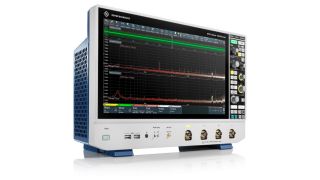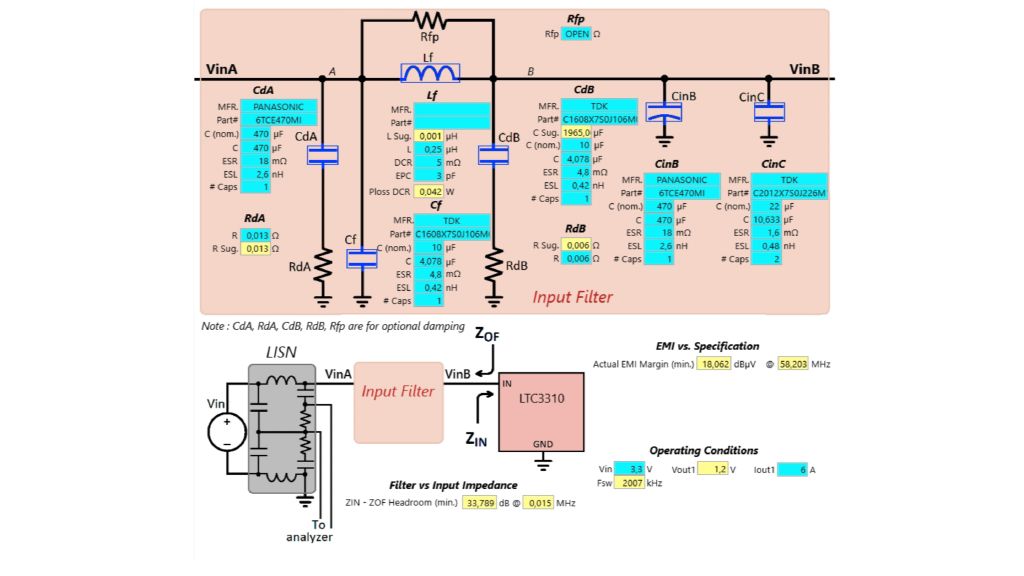Measurement
A conducted EMI measurement with the components used in the simulation was performed on the evaluation board. Common mode/differential mode separation was applied to enable a direct comparison between the measured spectrum and the simulated spectrum. The screenshot “Measured conducted EMI“ shows the relevant differential mode noise in the top window and the common mode noise in the bottom window. While the common mode spectrum plays no major role in this design, it can be valuable information in other designs, such as isolated power supply designs, in order to create an optimized EMI filter.
Deviation of simulated from measured results
The deviation of each simulated result from the measured result (see above table) was determined only at the fundamental frequency of the switching converter to reduce complexity. 2 MHz was selected as the fundamental switching frequency. Furthermore, the simulation was made with and without an EMI filter.
For the LTpowerCAD® II Design Tool, the above table shows a deviation from measured results of about 10 dB in either case, i.e. with and without an EMI filter. This gap is mainly due to the fact that no parasitic components and no high-frequency decoupling capacitors were included on the simulated PCB. Parasitic components such as series inductance and series resistance in any capacitor within a simulation circuit have shown to have a significant impact on EMI especially at higher frequencies.
The LTspice® tool provides better results since the simulated circuit reflects more closely the real evaluation board. However, for the simulation described here, relevant PCB components were still not included and unknown, and therefore a small deviation was to be expected. The LTspice® tool simulation engine tends to oscillate if reactive elements like inductors and capacitors are not damped properly. This is a necessary fine-tuning task and requires some experience on the part of the user to gain stable simulation results. On the other hand, a simulation tool such as LTspice® supports more sophisticated simulations as it allows defining electrical circuits with any parasitic components. If designers accept a greater effort to specify the most relevant parasitics as well as a longer simulation time, this tool can be a great benefit.














